Weaving Light – 2
Version 2
Bangalore 2024
Project research- 2009-2024
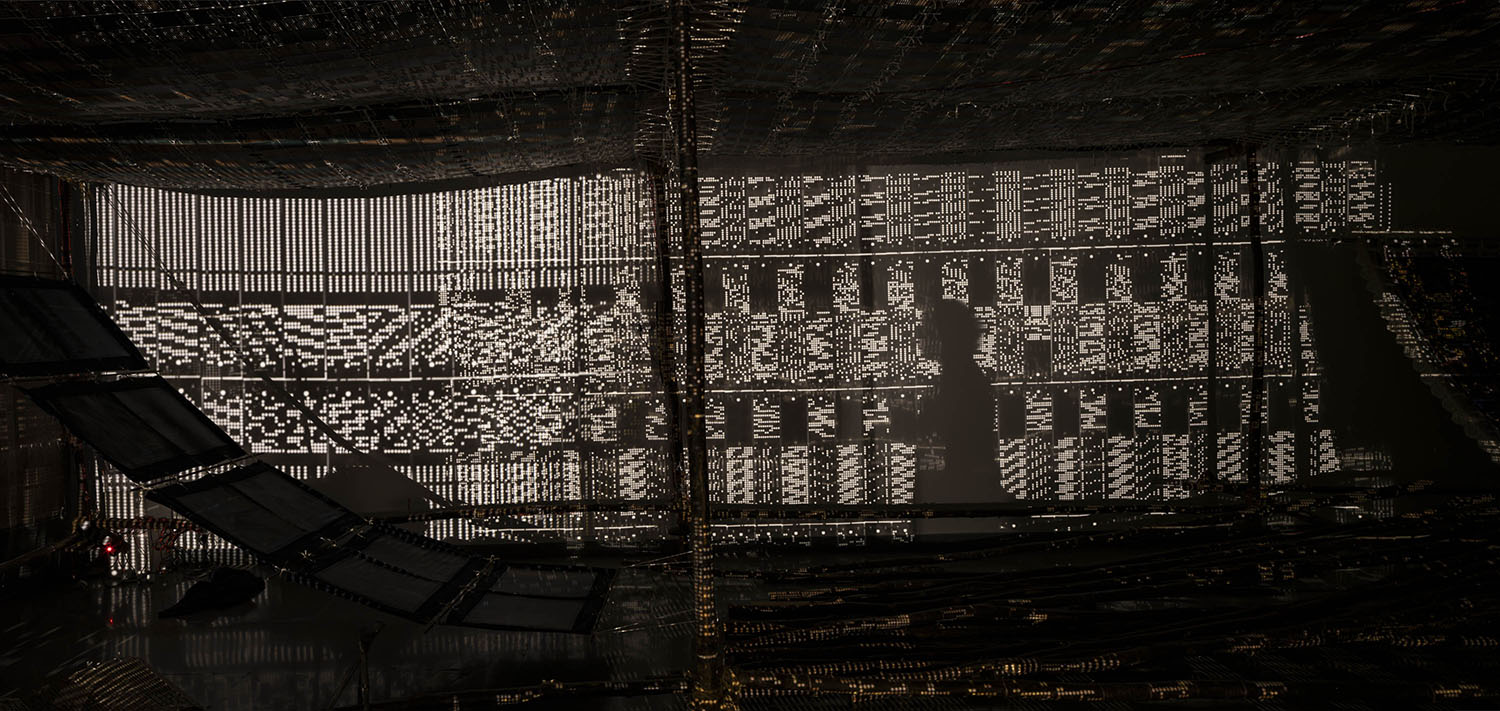
Photo Credit: Mallikarjun Katkol
Ada Lovelace, the first computer programmer describes that the functioning of the engine’s is programmed by punch cards, she wrote: “We may say most aptly that the Analytical Engine weaves algebraical patterns just as the Jacquard loom weaves flowers and leaves.”
Keeping tales alive, Archana Hande is a wanderer, seeker, researcher, and adventurer. Stories, resources, and conversations that she encounters while traveling helps her to recreate her travel experiences. Throughout the course of this show, she delves into one such journey: Archana has persistently studied and quantified the impact and influence of technology. Finding the minute details and piecing together the vast array of changes that are missed is Archana’s mission. She discusses with us the much-seen and much-unseen changes using the medium of Jacquard punching cards as she takes us along with her to explore this specific journey. Jacquard card perforations allow for the creation of forms and shapes that are characterized by the dance of light and shadow. Her play on understanding changes via multiple levels of human knowledge is shown through the structure, forms, and shapes created by the movement of light and shadow through the perforations of Jacquard cards —— How our surroundings, including cities, customs, and civilizations, are ever-changing. She examines how these developments affect human skills, patterns of settlements and resources by delving further into materiality and the archives of her travels. Through the use of light and shadow, Archana tells a tale that enables us to examine the results of her research in greater detail; as she arranges the many nuances —- of language, material and dialogue literally and figuratively.
Rucha Vibhute
2024
Installation Views
Part-1
Jacquard perforated punching cards (plastic/cardboard),
wooden scaffolding and timer lights
Variations | 2009 -2024
Gallery Sumukha Bangalore 2024
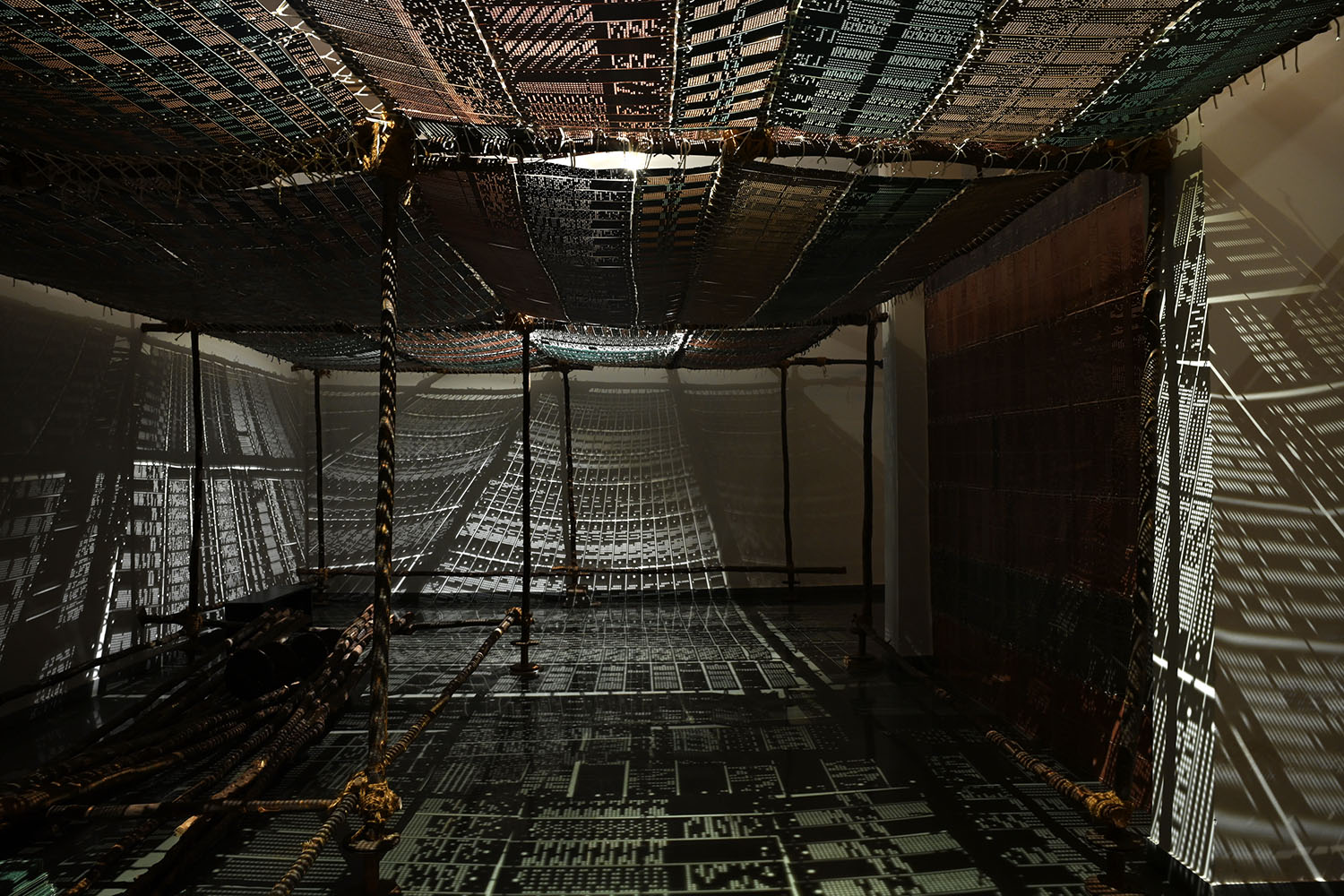
Photo Credit: Clare Arni
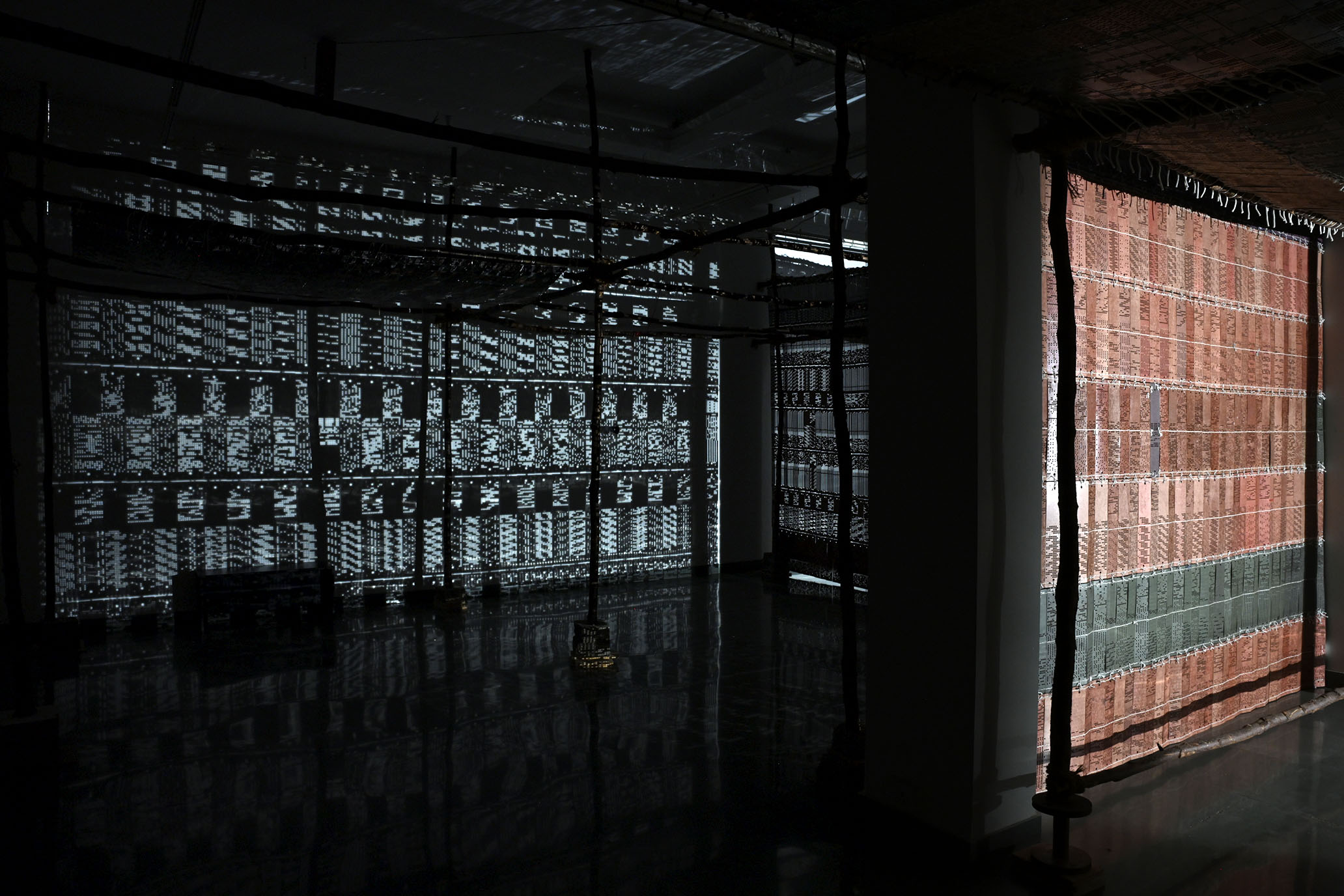
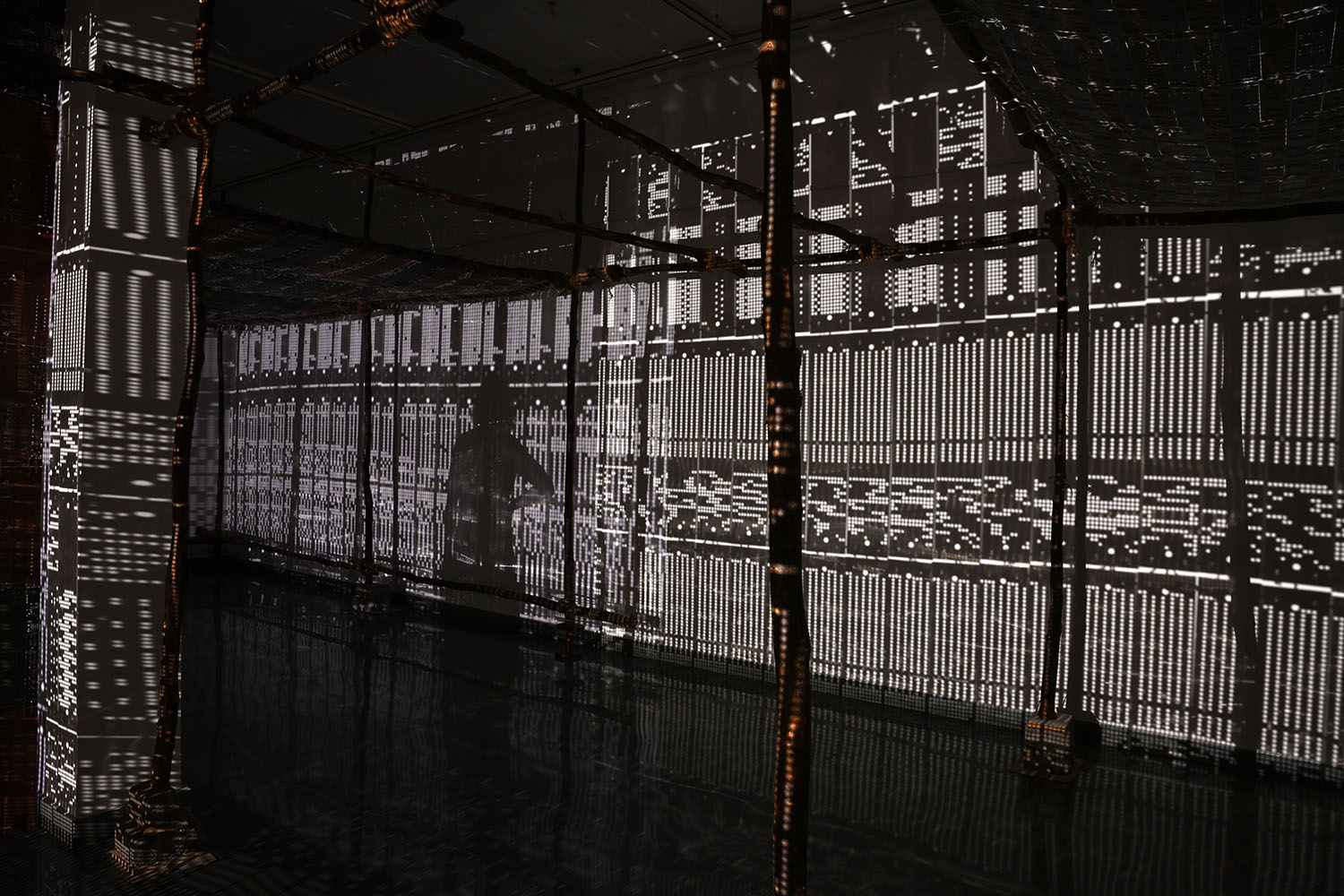
Photo Credit: Clare Arni
Installation Views
Part-2
Jacquard perforated punching cards (plastic/cardboard), wooden scaffolding, timer lights, Dyed Bangalore silk thread, Bobbin,
Thread, Shuttle, Kambar Board, Locks, Chappe thread, Neck thread, Saree material, Security labels, Bangalore silk thread, Border Kambi
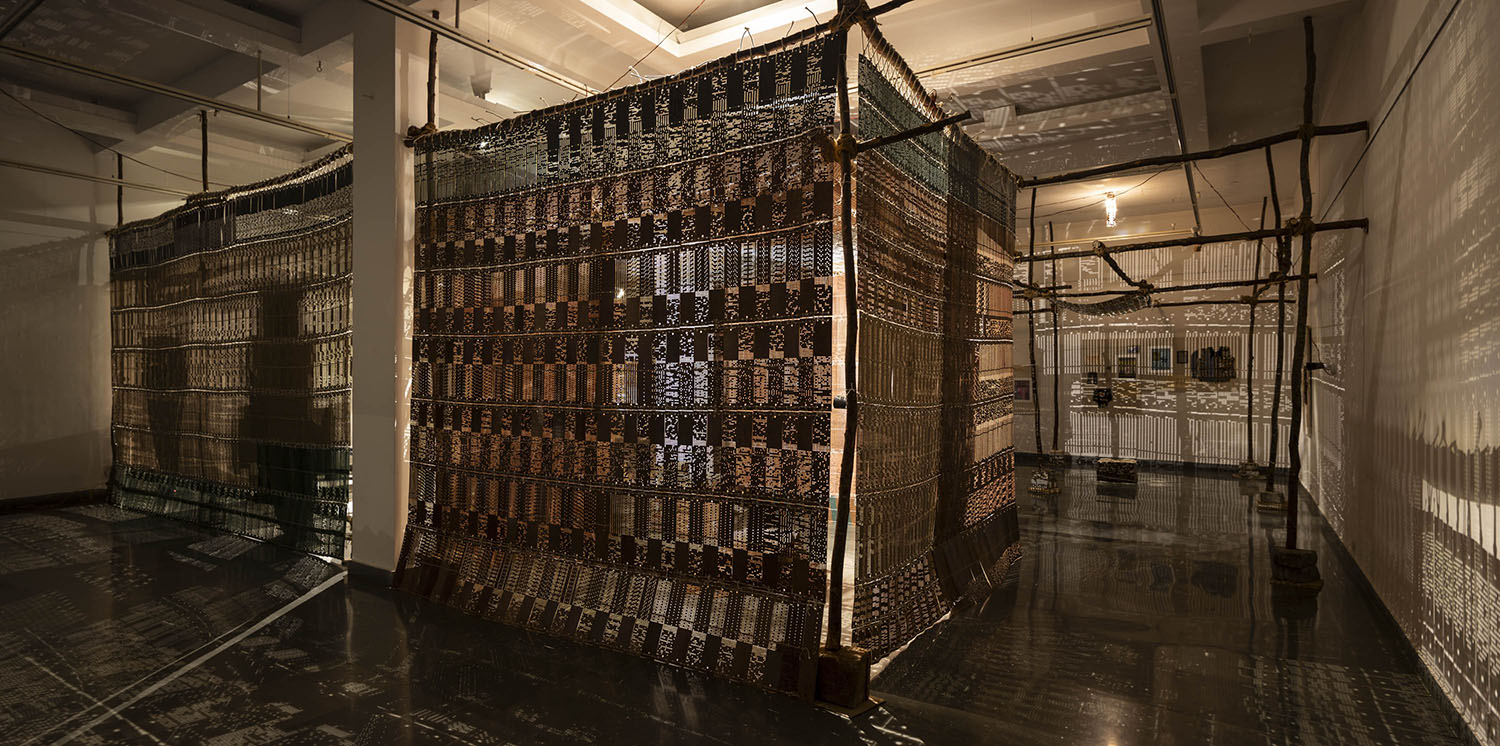
Photo Credit: Mallikarjun Katkol
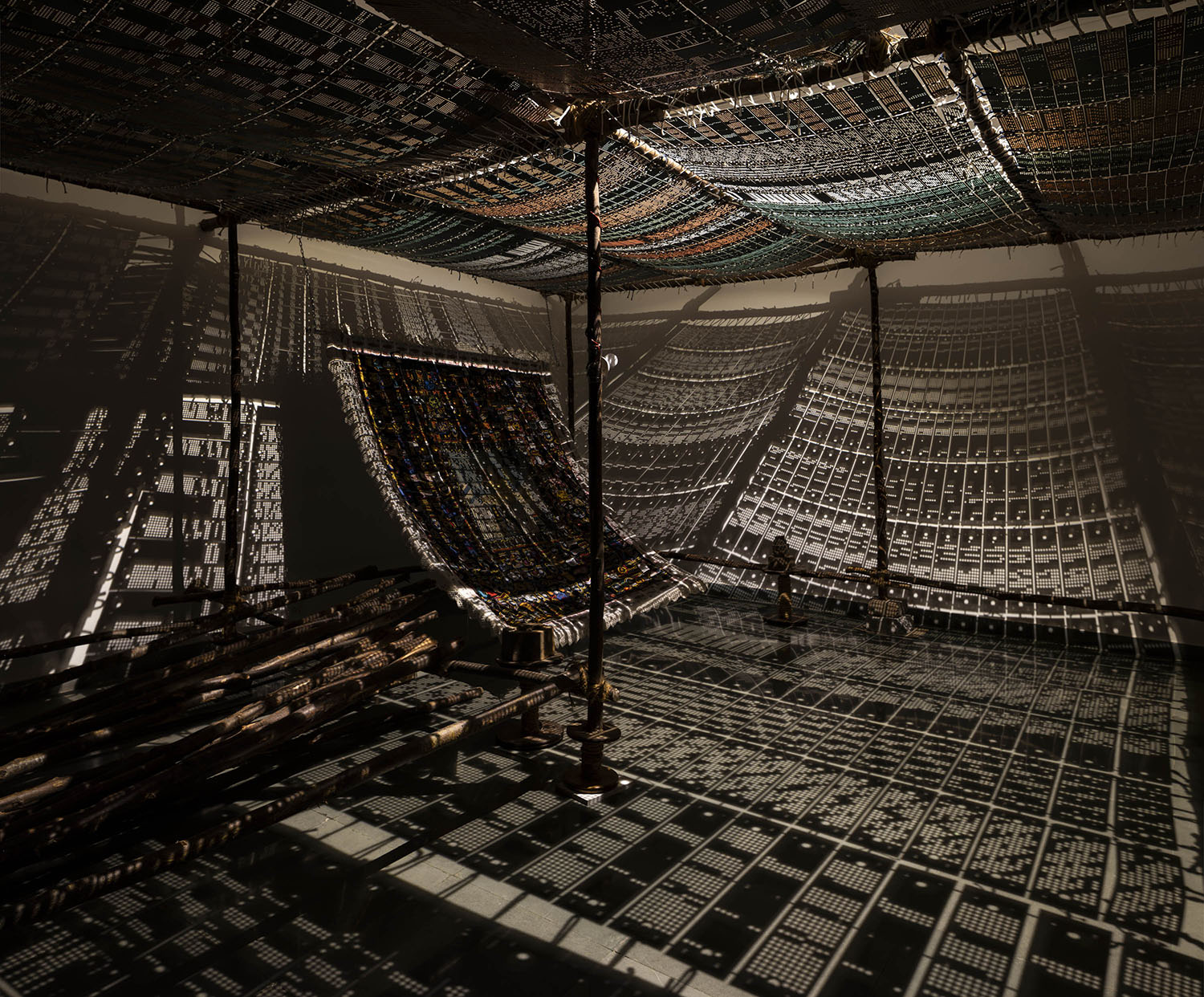
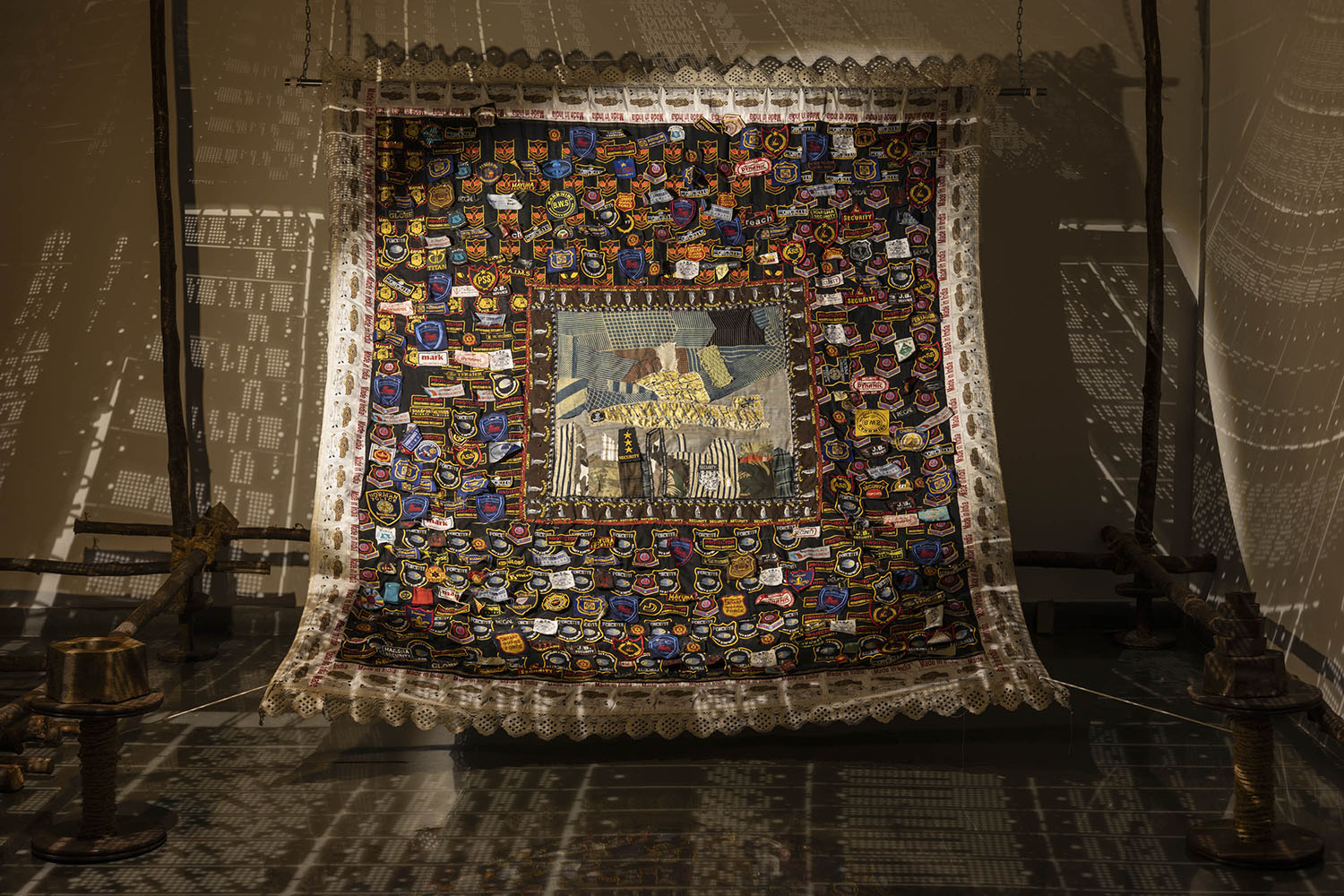
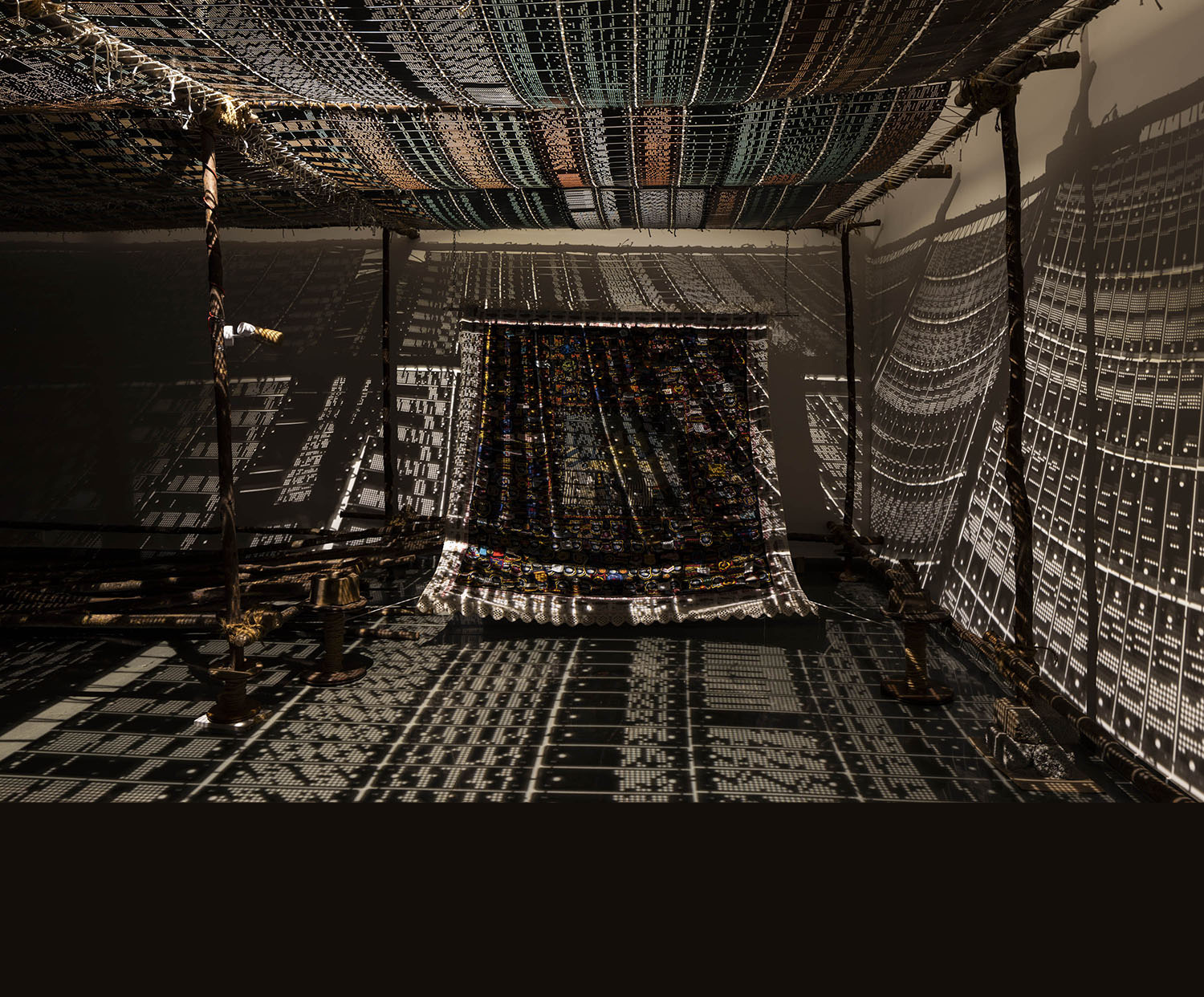
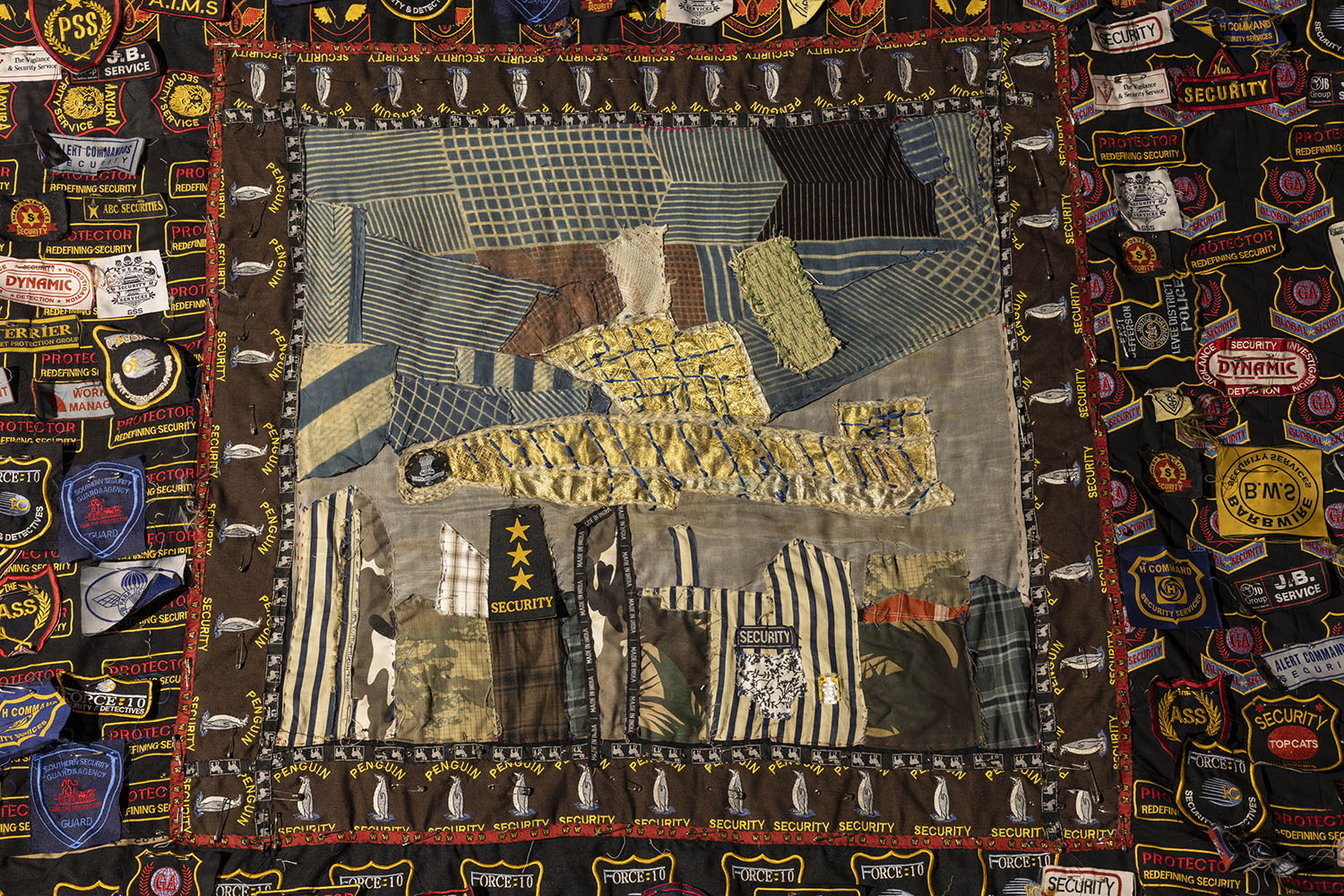
Photo Credit: Mallikarjun Katkol
Photo Credit: Mallikarjun Katkol
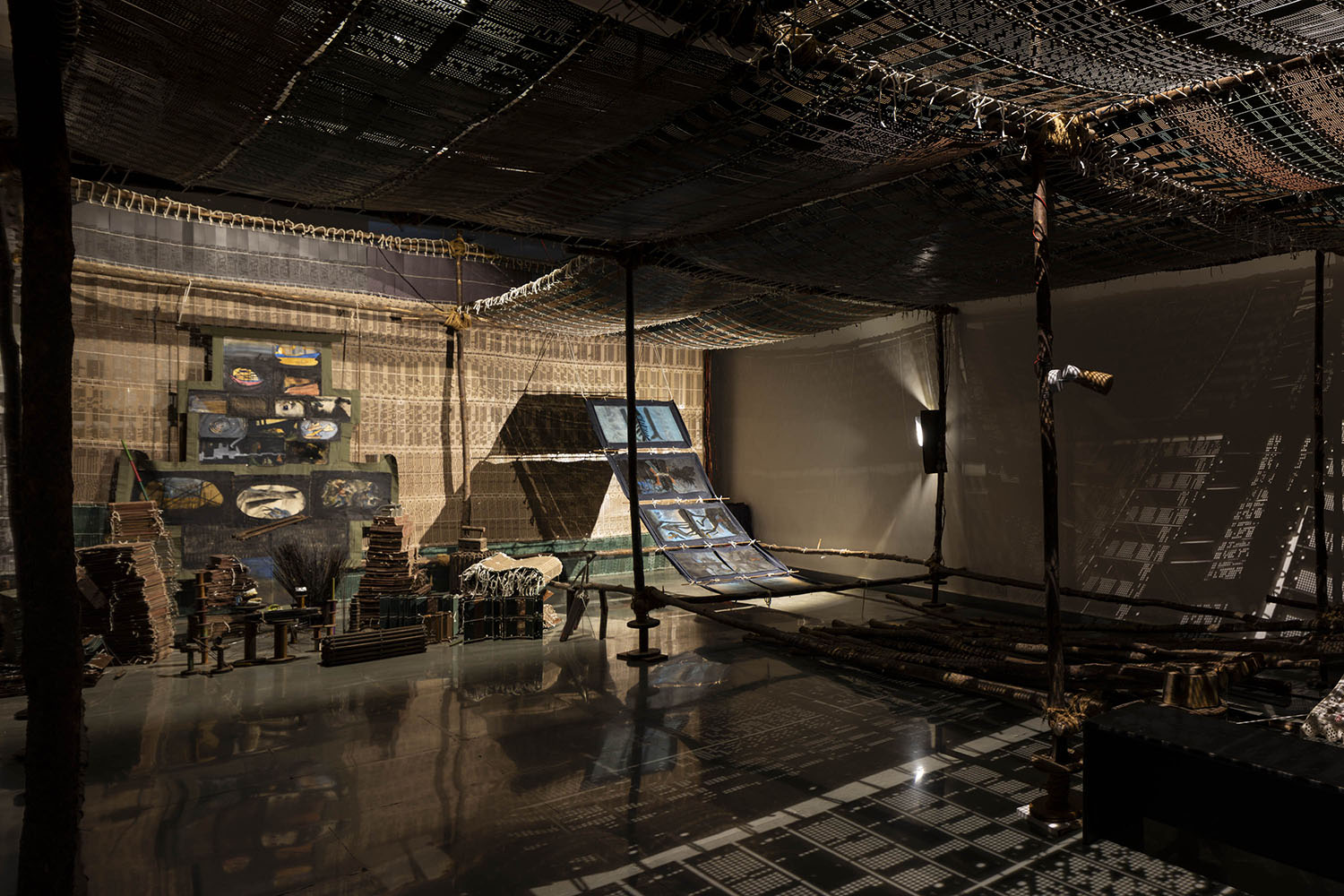
Photo Credit: Mallikarjun Katkol
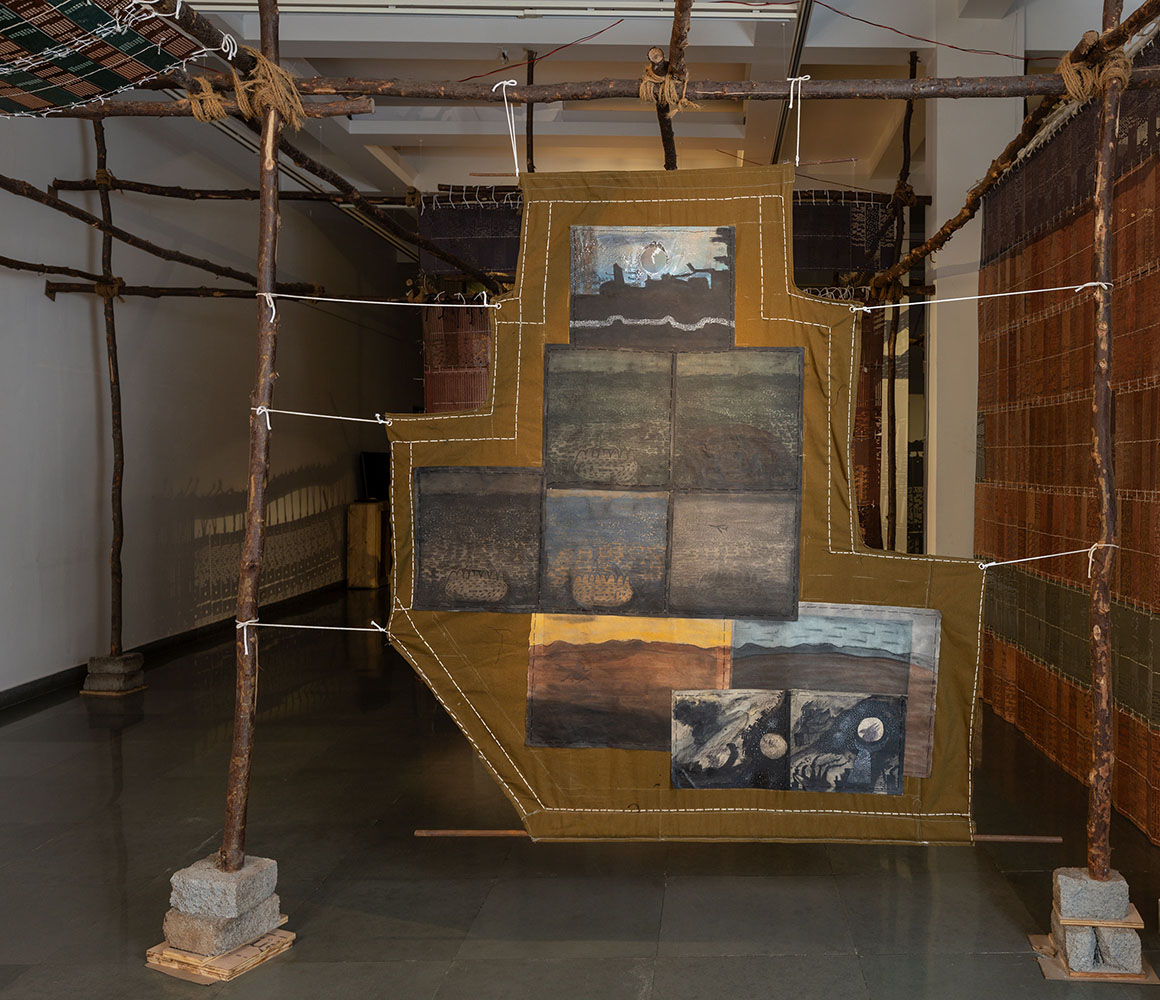
Photo Credit: Mallikarjun Katkol
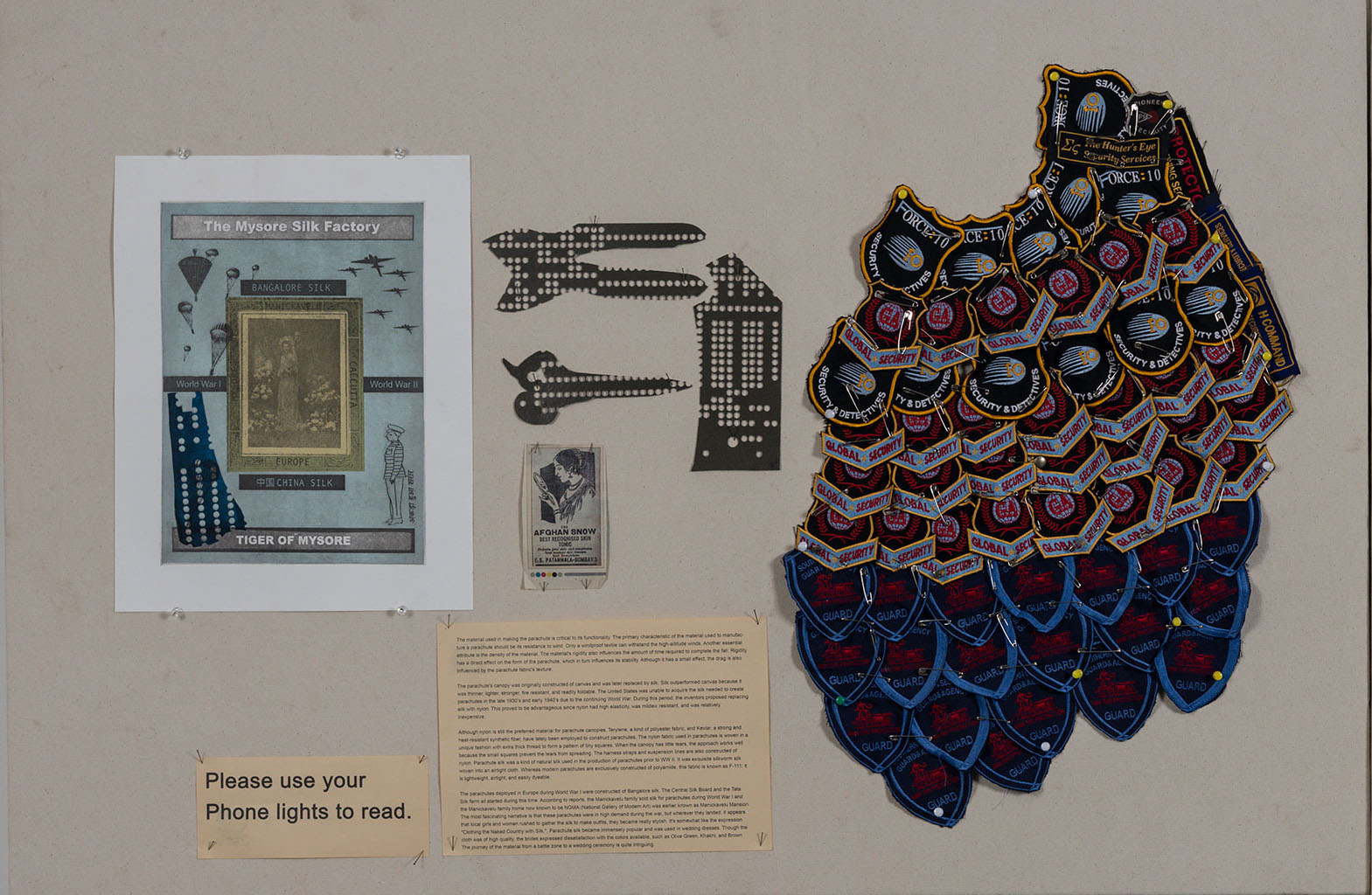
The parachute’s canopy was originally constructed of canvas and was later replaced by silk. Silk outperformed canvas because it was thinner, lighter, stronger, fire resistant, and readily foldable. The parachutes deployed in Europe during World War I were constructed of Bangalore silk. Central silk board and Tata silk farm all started at that time. According to reports, the Manickavelu family sold silk for parachutes during World War I. The Manickavelu family home now known to be NGMA (National Gallery of Modern Art) which was known as Manickavelu Mansion. The most fascinating narrative is that these parachutes were in high demand during the war, but wherever they landed, it appears that local girls and women rushed to gather the silk to make outfits. It became really stylish. It’s somewhat like the expression “Clothing the Naked Country with Silk.”, Parachute silk became immensely popular and was used in wedding dresses. Though the cloth was of high quality, the bride expressed dissatisfaction with the colors available, such as olive green, Khakhi, and brown. The journey of the material from a battle zone to a wedding ceremony is quite intriguing.

Katori Blouse – Advertisement is the most prominent kind of mass communication; with changes in the manufacturing business, forms of communication have also increased significantly. To assess the influence of advertisement, especially in the case of Katori Bluouse, we may consider factors such as gender, economy, technology, and industrial development. To show how all of these notions interact with a basic product like a blouse, which is expressly intended for women and is often produced by a male-dominated tailoring community. The blouse stiching occupation is interestingly placed between the skill demonstrated by the women who run these small enterprises from there homes to the mass produced production unit. The advertisments also differ for the household enterprises against the massed produced unit.The use of images, talent, and a popular medium to promote a unique, personally personal product on a widely used mass communication platform.
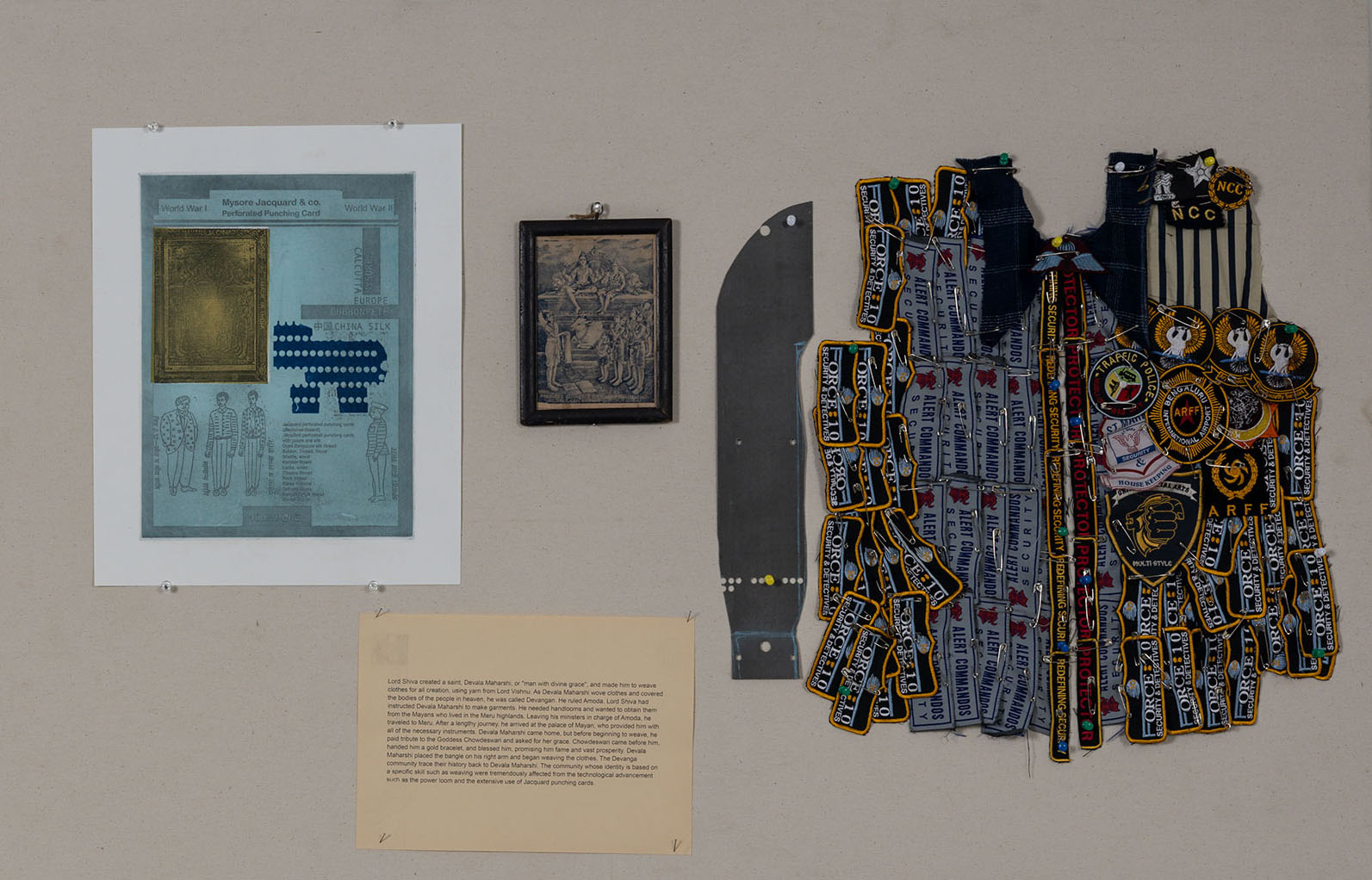
Devang community – Lord Shiva created a saint, Devala Maharshi, or “man with divine grace”, and bade him to weave clothes for all creation, using yarn from Vishnu. As Devala Maharshi wove clothes and covered the bodies of the people in heaven he was called Devangan. He ruled Amoda.Lord Shiva had instructed Devala Maharshi to make garments. He needed handlooms and wanted to obtain them from the Mayans who lived in the Meru highlands. Leaving his ministers in charge of Amoda, he traveled to Meru. After a lengthy journey, he arrived at the palace of Mayan, who provided him with all of the necessary instruments. Devala Maharshi came home, but before beginning to weave, he paid tribute to the goddess Chowdeswari and asked for her grace. Chowdeswari came before him, handed him a gold bracelet, and blessed him, promising him fame and vast prosperity. Devala Maharshi placed the bangle on his right arm and began weaving clothing. The Devanga community trace their history back to Devala Maharshi. The community whose identity is based on a specific skill such as weaving were tremendously affected from the technological advancement such as the power loom and the extensive use of Jacquard punching cards.
Photo Credit: Mallikarjun Katkol
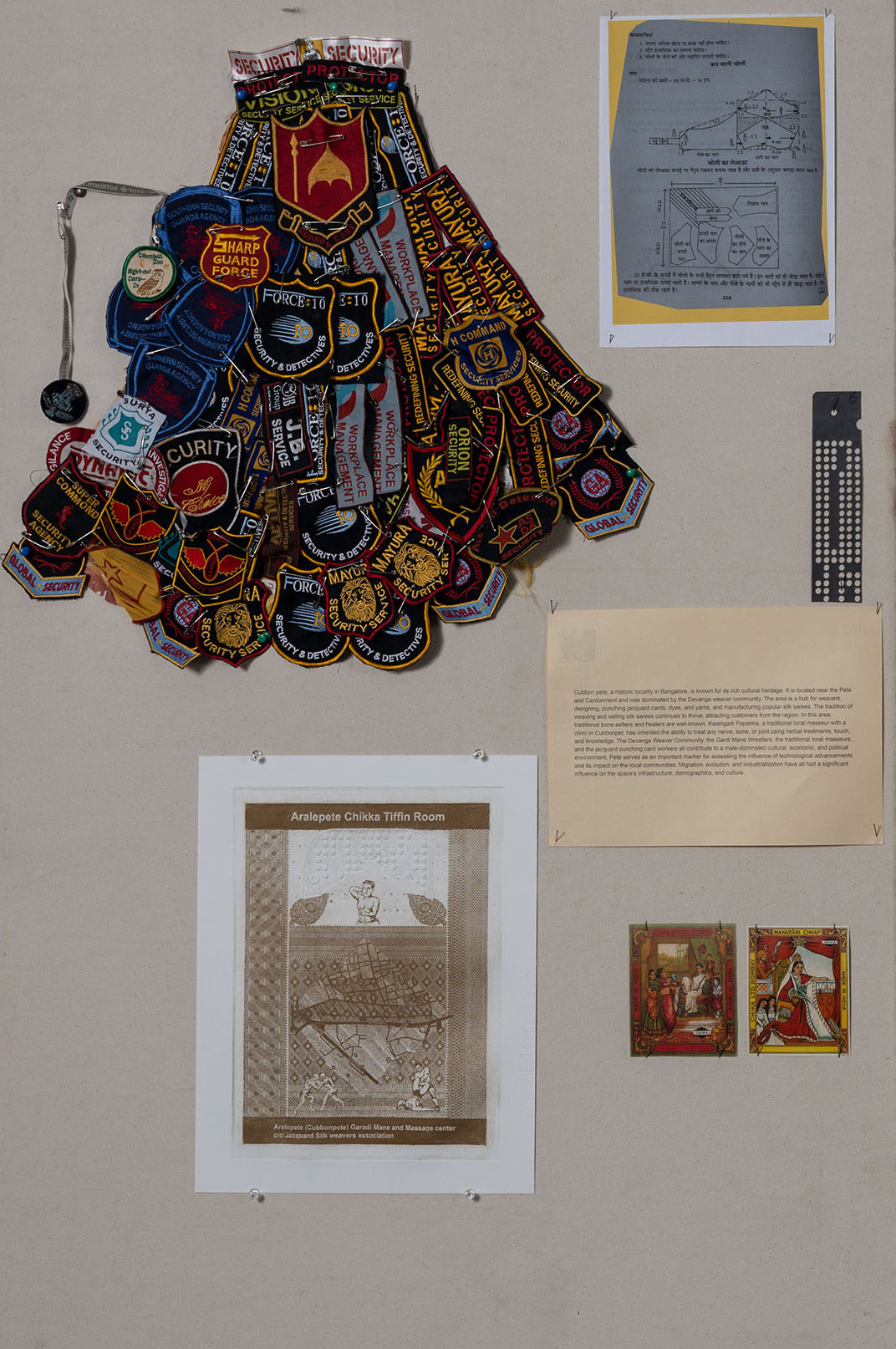
Cubbon Pete, a historic locality in Bangalore, is known for its rich cultural heritage. It is located near the Pete and Cantonment and was dominated by the Devangas weaver community. The area is a hub for weavers, designing, punching jacquard cards, dyes, and yarns, and manufacturing popular silk sarees. The tradition of weaving and selling silk sarees continues to thrive, attracting customers from the region. In this area, traditional bone setters and healers are well-known. Kaiangadi Papanna, a traditional local masseur with a clinic in Cubonpet, has inherited the ability to treat any nerve, bone, or joint using herbal treatments, touch, and knowledge. The Devang Weaver Community, the Gardi Mane Wrestlers, the traditional local masseurs, and the jacquard punching card workers all contribute to a male-dominated cultural, economic, and political environment. Pete serves as an important marker for assessing the influence of technological advancements and its impact on the local communities. Migration, evolution, and industrialization have all had a significant influence on the space’s infrastructure, demographics, and culture.
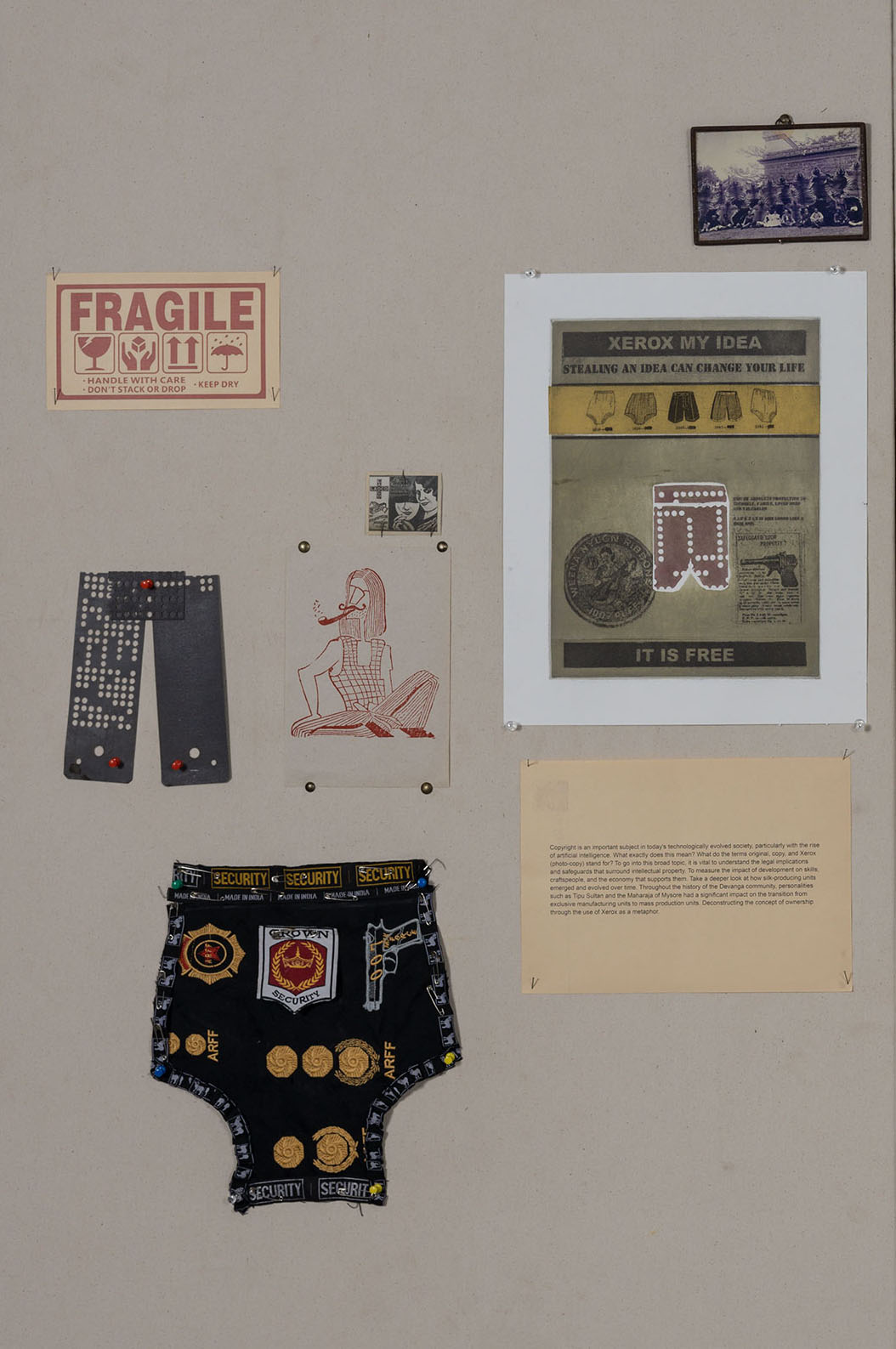
Copyright is an important subject in today’s technologically evolved society, particularly with the rise of artificial intelligence. What exactly does this mean? What do the terms original, copy, and xerox stand for? To go into this broad topic, it is vital to understand the legal implications and safeguards that surround intellectual property. To measure the impact of development on skills, craftspeople, and the economy that supports them. Take a deeper look at how silk-producing units emerged and evolved over time. Throughout the history of the Devang community, personalities such as Tippu Sultan and the Maharaja of Mysore had a significant impact on the transition from exclusive manufacturing units to mass production units. Deconstructing the concept of ownership through use of Xerox as a metaphor.
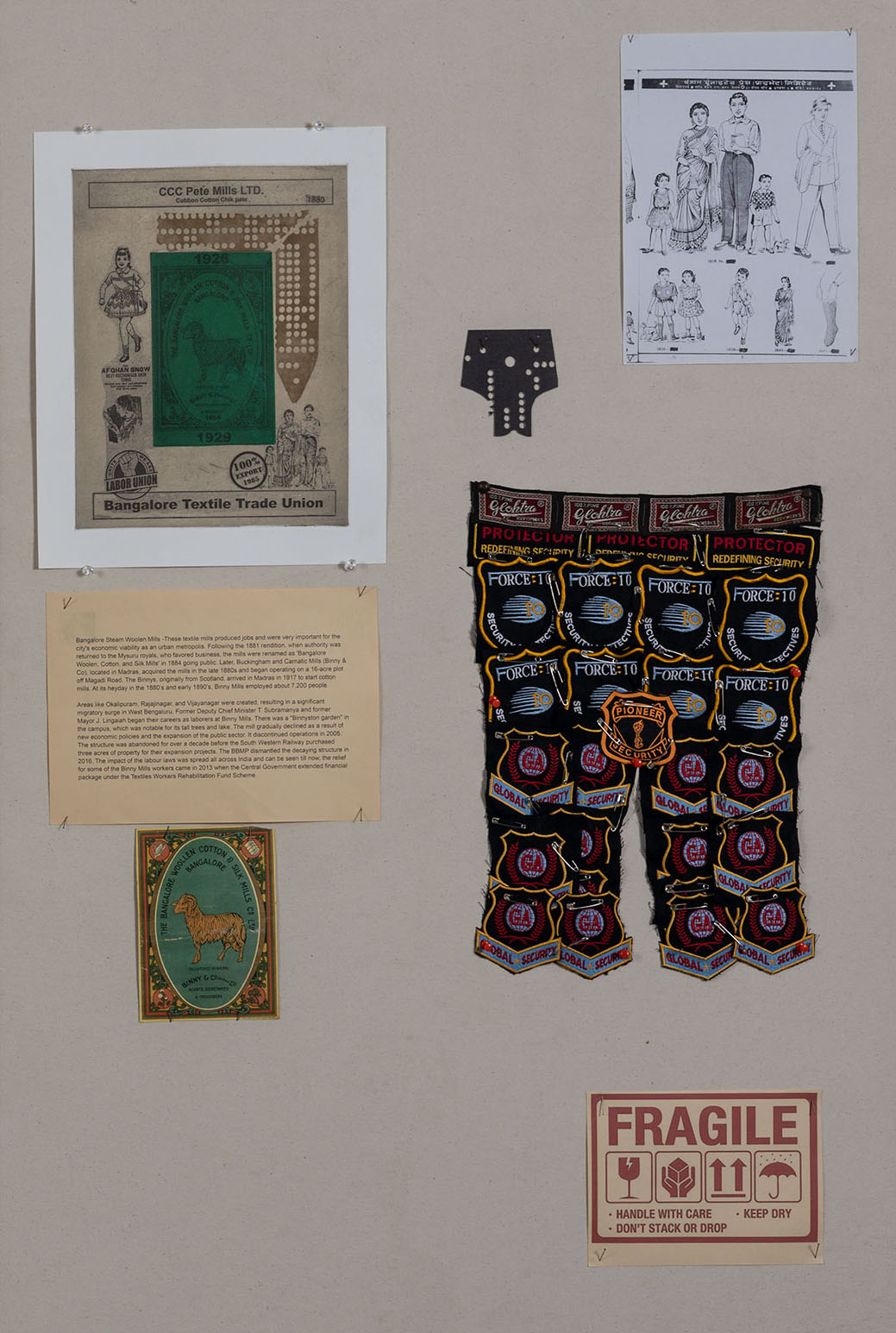
Labor Union – Bangalore Steam Woolen Mills -The mill produced jobs and were very important for the city’s economic viability as an urban metropolis. Following the 1881 rendition, when authority was returned to the Mysuru royals, who favored business, the mills were renamed the ‘Bangalore Woolen, Cotton, and Silk Mills’ in 1884. The mill has gone public. Buckingham and Carnatic Mills (Binny & Co), located in Madras, acquired the mills in the late 1880s and began operating on a 16-acre plot off Magadi Road. The Binnys, originally from Scotland, arrived in Madras in 1917 to start cotton mills. At its heyday in the 1880s and early 1890s, Binny Mills employed about 7,200 people.
Areas like as Okalipuram, Rajajinagar, and Vijayanagar were created, resulting in a significant migratory surge in West Bengaluru. Former Deputy Chief Minister T Subramanya and former Mayor J Lingaiah began their careers as laborers at Binny Mills. There was a “Binnyston garden” on campus, which was notable for its tall trees and lake. The mill declined as a result of new economic policies and the expansion of the public sector. It discontinued operations in 2005. The structure was abandoned for over a decade before the South Western Railway purchased three acres of property for expansion projects. The BBMP dismantled the decaying structure in 2016. The impact of the labour laws was seen across India and the impact can be seen till now, the relief for some of the Binny mill workers came in 2013 when central Government extended financial package under the Textiles Workers Rehabilitation Fund Scheme.
